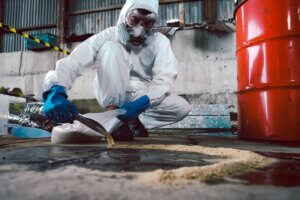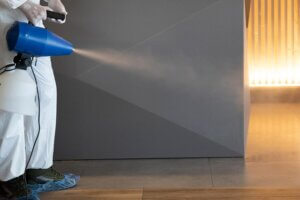BLOG

Effective Odour Removal In Biohazard Cleanup: Tools, Techniques And Tips
Effective Odour Removal In Biohazard Cleanup: Tools, Techniques And Tips
Dealing with biohazard situations is not just about removing visible hazards; it’s also about tackling the odours that can linger long after the initial cleanup. These odours are not only unpleasant but can also pose health risks, making effective odour removal a critical part of any biohazard cleanup process. Here in Australia, where we face our fair share of biohazard scenarios, from natural disasters to industrial accidents, knowing the right tools, techniques and tips for effective odour removal is essential for restoration professionals and the general public alike.
Understanding The Source

The first step in effective odour removal is understanding the source of the odour. Biohazard odours can come from a variety of sources, including but not limited to, decomposing organic matter, sewage leaks and chemical spills. Identifying the source is crucial because it determines the approach and tools required for effective odour elimination.
The Importance Of Professional Assessment
Given the complexity of biohazard odours and the potential health risks associated with exposure, the importance of a professional assessment cannot be overstated. Experienced biohazard cleanup professionals are trained to identify the sources of odours and determine the most effective treatment plans. They can also assess the overall safety of the affected environment, identifying hidden risks that might not be apparent to the untrained eye. In many cases, what seems like a straightforward cleanup can uncover deeper issues, such as mould growth or structural damage, which can contribute to persistent odours and require specialised treatment.
Tools Of The Trade

Professionals in the field of biohazard cleanup rely on a range of tools to tackle odours.
These include:
- Air Scrubbers: These devices use HEPA filters to remove particulate matter and gases from the air, effectively reducing odours.
- Ozone Generators: Ozone is a powerful oxidising agent that can neutralise odours. However, it must be used with caution, as ozone is harmful to humans and pets.
- Hydroxyl Generators: Similar to ozone generators but safer for use in occupied spaces, hydroxyl generators use UV light to create hydroxyl radicals that neutralise odours.
- Foggers: These devices disperse deodorising agents into the air and onto surfaces, neutralising odour molecules on contact.
Techniques For Odour Removal
Effective odour removal involves more than just masking smells; it requires techniques that address the root cause of the odour. Here are some tried and tested techniques:
- Thorough Cleaning: Before any deodorising can begin, all biohazard materials must be removed and the area thoroughly cleaned. This might involve the use of enzyme-based cleaners that can break down organic matter.
- Source Removal: Whenever possible, the physical source of the odour (such as contaminated materials) should be removed from the environment.
- Sealing: In some cases, sealing porous surfaces may be necessary to lock in any remaining odour particles that cannot be completely removed.
- Ventilation: Proper ventilation is crucial during and after the cleanup process to help disperse odours and introduce fresh air into the area.
Tips For Effective Odour Management

Here are some additional tips to ensure the effectiveness of your odour removal efforts:
- Safety First: Always use personal protective equipment (PPE) when handling biohazard materials and chemicals used in odour removal.
- Follow Instructions: When using chemical agents or equipment like ozone generators, follow the manufacturer’s instructions to ensure safety and effectiveness.
- Professional Help: In severe cases, it may be best to call in professional biohazard cleanup services. They have the experience and equipment to handle complex odour removal tasks safely and efficiently.
- Preventative Measures: Finally, implementing preventative measures can help avoid future odour issues. This includes regular maintenance and prompt attention to any spills, leaks, or other biohazard risks.
Effective Odour Removal Specialists
Odour removal in biohazard cleanup is a challenging but essential task. By understanding the source of the odour, utilising the right tools, employing effective techniques and following practical tips, odour removal specialists can restore environments to their pre-incident state, ensuring they are safe, clean and free of unpleasant odours.
For a professional approach to effective odour removal and biohazard cleanup, the team at National Trauma (NTCSC) are here to help. We’re available to assist 24/7 and can be at your doorstep in next to no time whenever you need us.